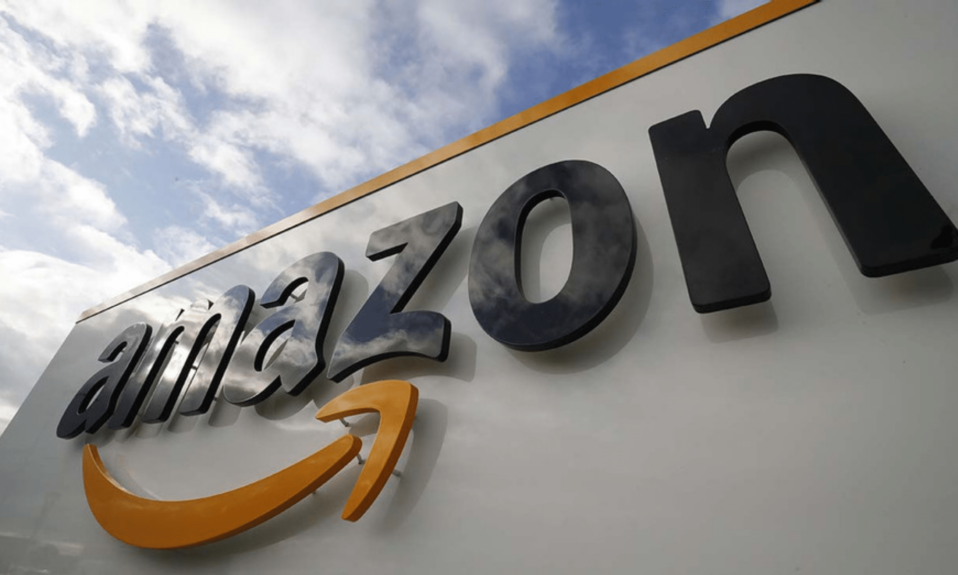
In 1994, Jeff Bezos quit his job and founded Amazon in his garage. The next year, the first book was ordered online on Amazon.
Twenty-six years later Bezos is the richest man in the world, with an estimated net worth of $197 billion, impressive right?
Well, when it comes to e-commerce trading, Amazon is a tool that neither online sellers nor online shoppers can ignore.
If you are eager to know how big Amazon is worldwide and in India, you can find the answers here.
Just keep on reading.
Fascinating Facts
- 300 million people use Amazon actively. That is twice the entire population of Russia!
- 197 million people visit Amazon.com monthly.
- Over 100 million users are registered on Amazon in India.
- Over 4.000 Amazon products are sold per minute.
- Amazon is offering 168 million products to its Indian customers.
- 218.000 sellers actively sell on Amazon India.
- Amazon Prime in India has 10 million users.
- Amazon India is the largest online smartphone channel with a 47% Market Share.
- Amazon’s revenue in India for FY 2020 was Rs 11,028 crore, up from Rs 7,777 crore in 2019.
How Big Is Amazon?
Amazon’s popularity is out of the question. Amazon has become a synonym for online shopping, and it goes on to develop new products and services, in order to keep its customers satisfied and to earn their trust.
So, let’s see how many people use amazon?
How Many Users Does Amazon Have?
With over 300 million active users, Amazon is a leading online retailer all over the globe. Amazon is on the top of the scale in the USA, when it comes to mobile shopping apps. According to Statista, in September 2019, 150.6 million mobile users accessed the Amazon App.
Another interesting thing to point is that, in September 2018, over 63 million users accessed Amazon Sites through a mobile device, which made Amazon the most popular site in the USA among mobile-only online visitors.
When it comes to India, Amazon has over 100 million registered users. This number of users in India is expected to grow, thanks to Amazon’s investments in infrastructure and making partners with local traders, for better deliveries. This is the reason why Amazon the topmost competitor to the homegrown Indian Flipkart, which has over 200 million registered users.
Is Amazon Winning The E-commerce Industry in India?
Amazon is in a good position in the Indian e-commerce market, but it is not alone. It is neck to neck with Walmart-owned Flipkart.
Even though both companies have had much the same journeys and both of them were trying to get a bigger piece of the Indian market share in 2019/20, Flipkart got the bigger piece. Its reported revenue for FY 19-20 was Rs 34,610 crore.
On the other hand, Amazon achieved a higher growth rate of 82%, while Flipkart only had a growth rate of 47%.
What Is The Most Popular Amazon Product Category?
The highest selling products on Amazon in the US are electronics.
According to a Feedvisor Consumer Survey (2019), 44% of US Amazon’s users had bought electronics via Amazon. The category of clothing, jewelry, and shoes was right behind at 43%.
Amazon: “Our vision is to be earth’s most customer-centric company; to build a place where people can come to find and discover anything they might want to buy online.†(Forbes)
Now, you may ask how many products does Amazon have?
As Amazon’s vision is “to help customers to find anything they might want to buy†it has modeled a catalog with over 12 million products for its customers. If we include Amazon Marketplace Sellers, the number of products is over 350 million products.
When it comes to the e-commerce market in India, Amazon confidently surpasses the number of products of its biggest Indian competitor – Flipkart.
Flipkart has over 80+ categories and 150 million products, whereas Amazon is offering 168 million products to its Indian customers.
How Many Products Are Sold Per Minute?
On average, SMBs (small and medium-size businesses) located in the US sell over 4.000 products per minute.
More than half of the products sold on Amazon’s stores worldwide are from SMBs. This shows the success that these businesses are achieving by working with Amazon.
On the other hand, in India, Amazon sells 150.000 orders per day, via its grocery channel Amazon Pantry.
Amazon has huge competition in the Indian e-commerce market. Its competitor JioMArt sells over 250.000 products on a daily basis, another of Amazon’s competitors is BigBasket with over 220.000 orders per day.
Amazon Has 9.7 Million Sellers Worldwide.
Here we have some interesting Amazon seller statistics.
Out of 9.7 million sellers, 1.9 million are actively selling on the marketplace. Amazon.com is the largest marketplace with 494,000 active sellers, Amazon.in (India) comes right behind with 218,000 active sellers.
The number of sellers on Amazon is constantly going up. So far, in 2021, 350.000 new sellers joined all Amazon marketplaces.
- As of Q42020, 55% of sold products on Amazon were sold by third-party sellers.
- According to “Businesstoday†cumulative exports worth over $3 billion, were crossed by 70.000 exporters registered with Amazon Global Selling Platform in India.
- Sales of Rs 10 lakh had over 4.000 SMBs, and 209 became crorepatis on Amazon Prime Day 2020 (August 6,7).
Amazon Usage Statistics
Demographics of Amazon Users
According to the Amazon customer demographics, the company’s target customers are the ones who don’t have mortgages or bills to pay. So, Amazon’s most targeted customers are teenagers.
As of March 2018, Amazon Prime was accessed by over a million unique female visitors in India, via mobile devices. According to this fact, a majority of visitors fell in groupage of 25-34.
Whereas, approximately five million unique male visitors accessed Amazon Prime via mobile device. Out of this, the majority of male mobile users on the platform fell in the groupage between 18-24.
As of January 2020, 81% of US adults, aged 18-34 were Amazon Prime members. This is an 11% increase, from 69% usage in February 2020. During the Covid-19 pandemic, Amazon Prime adoption increased across all age groups.
67% of Amazon Shoppers Prefer Shopping Through a Desktop Computer or Laptop.
Perhaps you are surprised by this number of 67%, so let’s clear things up – different age groups prefer different shopping devices.
Online shoppers younger than 35 prefer mobile devices, while generations above 55 choose desktop or laptop devices.
In 2018, 14.2% of Amazon Shoppers in the U.S. made a purchase via a voice-enabled device.
On the other hand, Amazon’s shoppers in India seem to like voice-enabled devices. In 2020, customers’ interactions with Alexa increased 67%.
How Popular is Amazon in India?
India Could Contribute Up to 20% of Amazon’s Growth.
At present time, maybe Amazon India is a small contributor to Amazon’s total sales, however, it is expected to become a significant growth driver for the U.S. e-commerce giant.
According to the tech investor, Gene Munster, India could potentially contribute 15% – 20% to Amazon’s growth over the next few years.
Amazon has declared an investment of $6 billion in India and has given its word to help small businesses in the country with an investment of $1 billion.
Amazon is Popular Destination For Research – in India and Globally.
Indian online shoppers prefer to research the product before making a purchase. Amazon is a popular destination for product discovery amongst those researching online.
- 66% of Indian urban active users have researched online before buying products.
- 52% of the online researchers have visited Amazon for their research.
New-to-Amazon shoppers reported being highly satisfied with their purchase experience, and a majority will continue to shop on Amazon in the future.
- 82% of new to Amazon shoppers stated that they are likely to continue shopping on Amazon long-term.
- Preferred categories these shoppers are likely to purchase over the next 6-8 months included: apparel & fashion (43%), mobile & accessories (42%), personal care & beauty (41%), household & grocery (39%), home appliances & decor (33%), and consumer electronics (24%).
In the U.S. Amazon is the most trusted e-commerce. Based on a study of more than 2.000 US customers, 89% of the customers said that they are more likely to buy products from Amazon than other e-commerce sites.
- 98% of the customers purchase on Amazon almost every day.
- 99% of the customers purchase on Amazon a few times in a week.
Amazon is devoted to providing a consistently reliable online shopping experience for consumers. In a way, customers know exactly what they’re getting into.
The trust that Amazon has built with its customers is based on consistent and transparent product experiences.
How Popular is Amazon Prime in India?
Let’s take a closer look at some Amazon Prime statistics in India.
Amazon India’s Prime Day 2020, held on August 6-7, has achieved a new record during the 48-hour sale. The e-commerce giant has doubled its Prime subscribers throughout the shopping festival compared to last year.
More than 65% of the new members were from more rural areas, outside the top ten cities.
You are wondering how many people use amazon prime in India?
Generally, Amazon Prime in India has 10 million users.
A consultancy firm, RedSeer, reveals that only 40% of loyalty program users pay for their membership while others are members because of bundled subscriptions. Another 30% of the users purchase Amazon Prime for videos instead of e-commerce shopping.
Globally, Amazon Prime had crossed 150 million paid subscribers in February 2020.
Amazon Revenue and Market Share
Amazon Revenue In India Has Increase of 42% in 2020.
As global e-commerce continues to grow, Amazon’s revenue is catching a similar pace.
In India, Amazon had a good run in 2020.
Amazon’s revenue for the financial year 2020 increased 42%, whereas losses had slightly increased, expenses widened 25%.
Besides the though competition with Walmart-owned Flipkart, Amazon’s revenue for 2020 was Rs 11,028 crore, up from Rs 7,777 crore in 2019.
According to NASDAQ: AMZN, in Q42020 the company’s revenue was $125.6 billion, which makes a 44% year-over-year increase. Of Amazon’s Q4 2020 revenue, net income constitutes $7.2 billion, more than double the previous year’s figures.
Amazon India Is the Largest Online Smartphone Channel with a 47% Market Share.
In 2020, with a 47% market share, Amazon India came out as the largest online smartphone channel, moving ahead of its biggest rival Flipkart.
According to Counterpoint, in the second quarter of 2020, Flipkart saw a decrease in the market share to 42%.
Among the top ten smartphone models on Amazon, nine were from Samsung and Xiaomi. The Rs 15,000-20,000 price band contributed the most and reached the highest Amazon market share in India.
Samsung, Xiaomi, and OnePus increased the shipment for Amazon.
Amazon Growth Trends
From “A Book Store†To “An Everything Storeâ€ÂÂÂÂÂÂÂÂÂ
Everything started in 1994 when Jeff Bezos quit his job and founded Amazon. The next year (1995) the first book was ordered online on Amazon.
In the very first month of Amazon’s launch, books were sold in all 50 states and in 45 different countries. In a month, Amazon had generated $20,000 per week in sales.
Twenty-six years later, Amazon is the world’s largest e-commerce company and a synonym for online shopping.
In February 2012, Amazon took its first step to the Indian e-commerce market, by launching Junglee.com, a site where customers could compare prices online but not purchase items directly.
- In June 2013, Amazon was live with its India marketplace, and in July 2014, J. Bezos announced that Amazon will spend $2 billion to grow its online retail business in India.
- In February 2016, a two-hour grocery delivery service was launched, by the name Amazon Now. In 2018 was rebranded as Prime Now, and later in August 2019, was named Amazon Fresh.
- In June 2016, an additional investment of $3 billion in India was announced by J. Bezos.
- In July 2016, Amazon’s Prime membership was launched in India.
- In 2016, Amazon Prime Video makes its India debut and in March 2018, Amazon Prime Music is launched in India.
- In September 2018, together with Samara Capital (private equity), Amazon acquired Aditya Birla Group’s grocery retail chain More for Rs 4,050 crore. In September 2020, they invested in the venture a further Rs 275 crore.
- In August 2019, Amazon signed an agreement to acquire a 49% stake in Future Coupons, a promoter entity of Future Retail, for around Rs 1,500 crore.
- In August 2019, in Hyderabad was opened the largest campus by Amazon, and in January 2020, J. Bezos announced that Amazon will make another investment of $1 billion in SMBs in India.
From zero – to hero!
Today, Amazon is the strongest competitor, globally and in India. Even though facing fierce competition in India, Amazon successfully has managed to surpass even Walmart.
In 2018, Amazon made a record-breaking $10 billion in profits. Which is up from $3 billion the year before and easily tops the $6.7 billion that fell to Walmart’s bottom line.
Nonetheless, Walmart remains larger in other parts. It still pulls in more than double the revenue and has more assets on its balance sheet due to the significant real estate that it owns.
Amazon Prime Day is The Most Profitable Shopping Day.
Amazon Prime Day 2020 was the biggest event ever for small and medium businesses in Amazon’s stores worldwide.
The sale for the third-party sellers outreached $3.5 billion on Prime Day, which is a nearly 60% year-over-year increase. Prime members had a chance to save more than $1.4 billion, taking advantage of huge discounts and great deals during Prime Day.
Amazon Saw Highest Sale Transactions for the Great Indian Festival – 2019.
Together with its biggest competitor, Walmart-owned Flipkart, Amazon took 90% market share during the Great Indian Festival and The Big Billion Days sale in India. Even though Flipkart was leading with 60-62% and Amazon India coming in at 28-30%, it stated that it was the highest sale transaction across all online shopping platforms.
- During the sale, customers from 99.4% of India’s postal codes ordered online. More than 600 flights were delivering Amazon products.
- Compared to last year, there were 1.5 times as many customers opting for EMIs during this year’s sale.
- The fashion category was the most famous one, more than 1 million fashion items were sold within the first 24 hours of the sale going live.
- During the first day of the Great Indian Festival, nearly 15,000 sellers on Amazon India doubled their sales, and thousands of them recorded their highest sales ever.
Key Factors That Influence Purchasing Decision On Amazon
- The main factor which influences customers in their purchasing decisions on Amazon is the price with a rate of 41.1%. The second top factor which influences the purchasing decision of the surveyed shoppers is the quality of the shopping experience with a rate of 22.7%.
- As a next influencing factor comes the number of ratings or reviews with a rate of 7.7%.
- 9.1% of the surveyed shoppers said that the prior experience of the product or brand is a factor that influences their purchasing decisions on Amazon.
Amazon has earned its clients’ trust by delivering the products they want, on time, and in the same branded brown boxesâ€â€ÂÂÂÂÂÂÂÂregularly.
Amazon focuses on building trust with its customers by providing them the right content and high-quality customer service, which helps customers trust Amazon in the long run.
Amazon Advertising Statistics
In FY 2020, Amazon’s marketing spendings were close to $22 billion, up from $18.9billion in the previous year.
Amazon’s most relevant marketing channels include third-party customer referrals, sponsored search, social and online advertising.
In 2018, Amazon was among the leading advertisers in the United States with a measured media spend of approximately $1.84 billion.
- Amazon made 14.09 billion USD in “other sales†in 2019, the majority of which comes from advertising revenue (they spent 6.88 billion USD on advertising).
- Amazon’s ad business represents 8% of the total digital ad market in the US.
- Amazon is the third-largest ad platform in the US, behind only Google and Facebook.
Amazon Interesting Facts
Every minute counts when Amazon’s website goes down
In August 2013, Amazon’s website went down for 40 minutes, and the company lost $5 million.
Amazon was not the company’s original name
Bezos’ first thought was to give the name “Cadabraâ€ÂÂÂÂÂÂÂÂÂ. However, Bezos’ lawyer convinced him that it is too similar to “Cadaverâ€ÂÂÂÂÂÂÂÂÂ, especially over the phone.
Amazon India launched four new languages on its platform
Tamil, Telugu, Kannada, and Malayalam are the four regional languages that Amazon has introduced to its platform. With this gesture, Amazon’s plan is to capture the next 200-300 million online consumers, while also giving existing customers the ability to shop and transact online in their native languages.
Amazon’s fastest delivery was delivered in 29 minutes and 54 seconds
On Amazon Prime Day, the fastest delivery was delivered in 29 minutes and 54 seconds and included Febreze Car Air Freshener Vent Clips.
Conclusion
So, do you need a book? – You can order it from amazon.com.
Do you need an electronic device? – You can get it from Amazon.
Maybe you are looking for a gift? – You can search for it on amazon.in
My point is, everything you need (or you do not need) you can find it on Amazon.
Amazon is going bigger and bigger, and there are not any signs of slowing down.




